William A. Shanklin | |
|---|---|
 | |
| President of Wesleyan University | |
| In office June 1909 –1923 | |
| Children | 3 |
| Signature | |
William Arnold Shanklin (April 18, 1862 – October 6, 1924) was a Methodist minister and an American university president.
William A. Shanklin | |
|---|---|
 | |
| President of Wesleyan University | |
| In office June 1909 –1923 | |
| Children | 3 |
| Signature | |
William Arnold Shanklin (April 18, 1862 – October 6, 1924) was a Methodist minister and an American university president.
William Arnold Shanklin, a member of the prominent Shanklin Family, was born at Carrollton, Missouri on April 18, 1862. [1] He was the son of Wesley Dunscombe Shanklin and Lockie Ann (née Arnold) Shanklin. [2] His younger brother, Arnold Shanklin, served as consul general of the United States at Panama beginning in 1905. [1]
Shanklin was educated at public schools in Missouri before attending Hamilton College (A.B., 1883) and at Garrett Biblical Institute (S.T.B., 1891). [3]
Before entering the ministry, Shanklin spent four years "engaged in mercantile pursuits" in Chetopa, Kansas. After graduating from Garrett Biblical Institute in 1891, Shanklin was ordained to the Methodist Episcopal ministry and held pastorates in Kansas, in Spokane and Seattle, in Washington, in Dubuque, Iowa, and in Reading, Pennsylvania. [2]
In 1905, he was elected president of Upper Iowa University, which was founded in 1857, and served as president from 1905 until 1909. In 1908, he was elected to succeed Bradford P. Raymond as the ninth president of Wesleyan University in Middletown, Connecticut beginning in June 1909. He received many honorary degrees, including a D.D. from the University of Washington in 1895, and an LL.D. from Baker University in 1906. [2]
On October 13, 1891, Shanklin was married to Emma Elizabeth Brant (1869–1947), the daughter of Jefferson Emery Brant and Mary Ann (née McAllister) Brant, at Fort Scott, Kansas. Together, they were the parents of three children: [2]
Shanklin died in New York City on October 6, 1924. [4] He was buried at Rose Hill Cemetery in Bloomington, Indiana. [5]
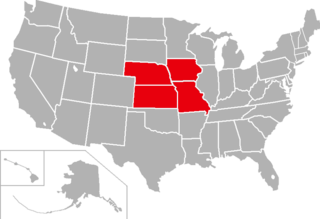
The Heart of America Athletic Conference is a college athletic conference affiliated with the National Association of Intercollegiate Athletics (NAIA). Member institutions are located in Iowa, Kansas, Missouri, and Nebraska in the United States.
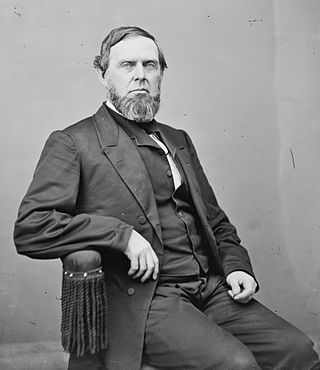
James Harlan was an attorney and politician, a member of the United States Senate, a U.S. Cabinet Secretary at the United States Department of Interior under President Andrew Johnson, and a Federal Judge.

Herbert George Welch was an American bishop of the Methodist Episcopal Church, The Methodist Church and the United Methodist Church. He was elected to the episcopacy in 1916. He also distinguished himself as a Methodist pastor, and as the fifth President of Ohio Wesleyan University, Delaware, Ohio.
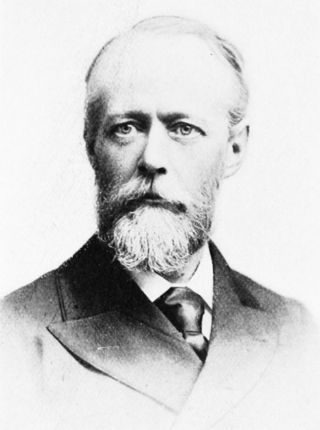
William North Rice (1845–1928) was an American geologist, educator, and Methodist minister and theologian concerned with reconciliation of science and religious faith.

John Emory Andrus was mayor of Yonkers, New York, a U.S. Congressman from New York, and founder of the SURDNA Foundation.
Samuel Russell, was an American entrepreneur and trader, and founder of Russell & Company, the largest and most important American trading house in China from 1824 to its closing in 1891.

The Coite–Hubbard House is a historic house at 269 High Street in Middletown, Connecticut, United States. Built in 1856, it is a prominent local example of high-style Italianate architecture. Since 1904, it has served as the official residence of the president of Wesleyan University. It was listed on the National Register of Historic Places in 1978.
Thomas Hicks Mudge (1815–1862) was an American Methodist Episcopal clergyman, born at Orrington, Me., the nephew of Enoch Mudge.

Samuel Hitt Elbert was an attorney in the Nebraska Territory before settling in the Colorado Territory. He served as the second Secretary of the Territory of Colorado from 1862 to 1866 and he served as the sixth Governor of the Territory of Colorado from 1873 to 1874. After Colorado statehood, he was a justice of the Colorado Supreme Court from 1876 to 1888 and was chief justice from 1879 to 1882.

Charles Wilbert "Bill" Snow was an American poet, educator and politician. He served as the 75th Governor of Connecticut. He generally went by the name Wilbert or Bill Snow, or formally as C. Wilbert Snow.
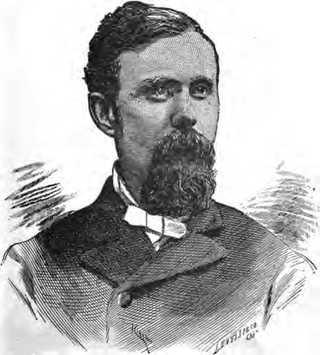
Thomas Van Scoy was an American minister and educator in Indiana, Oregon, and Montana. A Methodist, he served as the sixth president of Willamette University and as president of the now defunct Portland University. He was also president of Montana Wesleyan University and served in the militia at the end of the American Civil War.
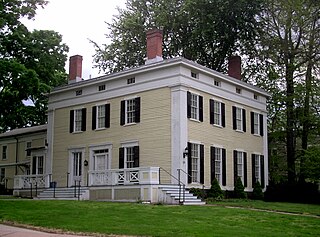
Wesleyan University is a private liberal arts college and "little university" located in Middletown, Connecticut. The now secular and co-ed institution was founded in 1831 as an all-male Methodist college.
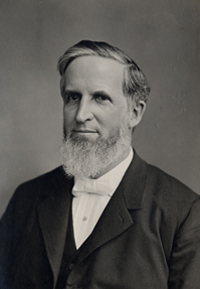
Cyrus David Foss was a prominent Methodist bishop in the latter 19th century, primarily serving in New York City and New England.

William Xavier Ninde was a bishop of the Methodist Episcopal Church.

Levin Major Lewis was a Confederate States Army colonel during the American Civil War. On May 16, 1865, he was assigned to duty as a brigadier general by General E. Kirby Smith when the war in the Trans-Mississippi Department was almost over, but he was not officially appointed by Confederate President Jefferson Davis and confirmed by the Confederate Senate to that grade.

Oliver Hoyt was a member of the Connecticut Senate from 1877 to 1881. He was President Pro Tempore of the Connecticut Senate from 1877 to 1879.

Paul North Rice was an American librarian who served as Chief of the Reference Department of the New York Public Library, Executive Secretary of the Association of Research Libraries and President of the American Library Association.
John Onesimus Foster was an American Methodist minister. He was a member of the Rock River Conference, a chaplain for the Sons of the American Revolution, and a faculty member at the University of Puget Sound.
Stephen Henry Olin was a lawyer and the acting president of Wesleyan University and a member of New York society during the Gilded Age.
This article incorporates text from a publication now in the public domain : Gilman, D. C.; Peck, H. T.; Colby, F. M., eds. (1905). New International Encyclopedia (1st ed.). New York: Dodd, Mead.{{cite encyclopedia}}: Missing or empty |title= (help)